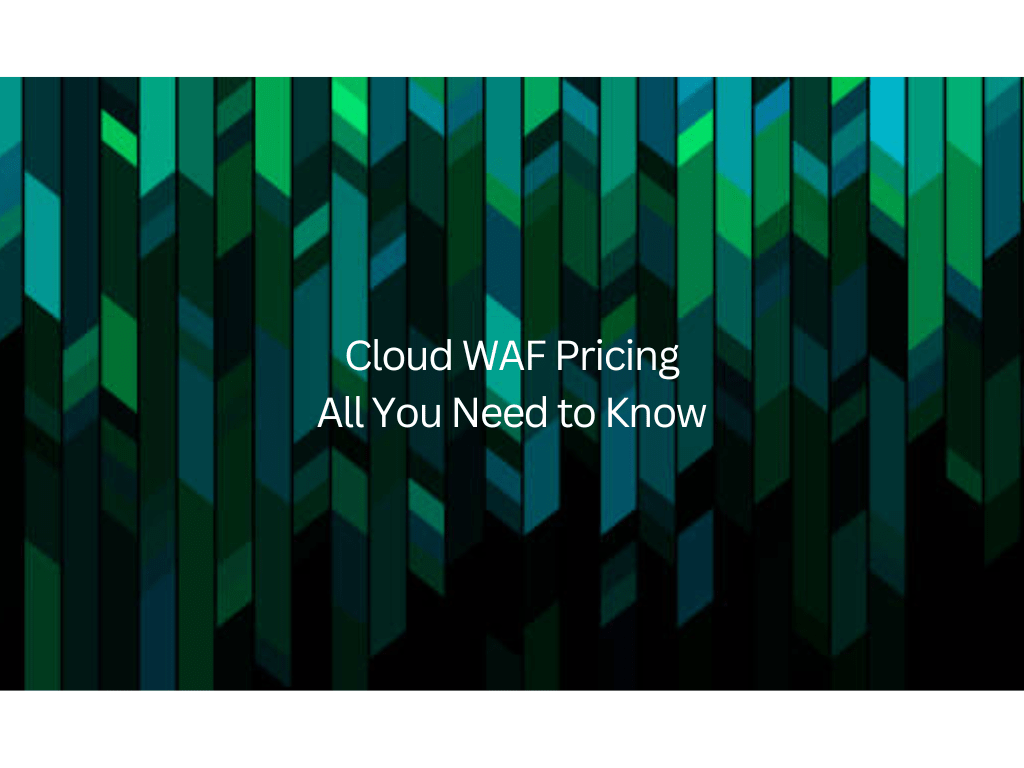Cloud Web Application Firewall (WAF) services have become a critical component of modern cybersecurity strategies. As organizations strive to protect their web applications from various threats, understanding the pricing models associated with cloud WAF services is crucial. In this article, we will explore the key factors that affect cloud WAF pricing and provide you with all the information you need to make an informed decision.
- Deployment Model: Cloud WAF services are offered by various providers, and each may have a different pricing structure based on their deployment models. The two common deployment models are shared WAF and dedicated WAF. In a shared WAF, multiple customers share the same infrastructure, resulting in lower costs. On the other hand, a dedicated WAF provides exclusive resources for a single customer, offering enhanced performance and customization options at a higher price.
- Traffic Volume: The amount of web traffic your applications receive is a major pricing factor. Cloud WAF providers often charge based on the volume of incoming and outgoing traffic, typically measured in gigabytes (GB) or terabytes (TB) per month. Higher traffic volumes may require higher subscription tiers or incur additional charges.
- Advanced Features: Cloud WAF services offer a range of advanced features to enhance security, such as DDoS protection, bot mitigation, API security, and SSL/TLS encryption. These features may be priced separately or bundled into different subscription tiers. The more advanced features you require, the higher the cost is likely to be.
- Rule Set Complexity: Cloud WAFs allow you to define custom security rules to protect your applications. The complexity of these rules can impact pricing. Providers may have different pricing tiers based on the number of rules you define or the complexity of the rule sets. Consider your specific security requirements and evaluate the rule set limitations of different pricing plans.
- Geographical Distribution: If your web applications are accessed globally, you may need a cloud WAF service with a wide network of edge locations. Some providers charge based on the geographical distribution of their WAF service. Additional costs may be associated with routing traffic to and from different regions. Evaluate the pricing structure for global coverage to align with your application’s needs.
- Support and Service Level Agreements (SLAs): Support and SLAs are crucial considerations when choosing a cloud WAF provider. Higher levels of support, such as 24/7 monitoring and dedicated support engineers, usually come with a higher price tag. Understand the support options and SLAs provided by each provider and weigh them against your organization’s requirements.
- Additional Costs: Be mindful of any additional costs that may not be explicitly mentioned in the base pricing. These could include charges for API requests, anomaly detection, incident response, or professional services. Carefully review the pricing documentation and terms of service to identify any potential hidden costs.
- Free Trials and Usage-Based Pricing: Many cloud WAF providers offer free trial periods or usage-based pricing options. Free trials allow you to test the service before committing to a paid plan. Usage-based pricing charges you based on the actual consumption, which can be advantageous for applications with fluctuating traffic patterns.
In conclusion, cloud WAF pricing is influenced by several factors, including deployment model, traffic volume, advanced features, the rule set complexity, geographical distribution, support options, and additional costs. To make an informed decision, evaluate your specific requirements, compare pricing plans from different providers, and consider factors beyond the base price. By understanding the pricing models and associated features, you can choose the most cost-effective cloud WAF service that meets your organization’s security needs.




